The Future of High-Performance Motoring
The boundaries of electric performance have been shattered. Mercedes-AMG’s CONCEPT AMG GT XX signals a seismic shift in the landscape of luxury sports cars, combining revolutionary drive technology with unprecedented endurance capabilities. This isn’t merely another electric vehicle concept – it’s a manifesto for the future of high-performance motoring. With three axial flux motors generating over 1,000 kW and a top speed exceeding 360 km/h, the CONCEPT AMG GT XX demonstrates that electric propulsion can deliver the visceral excitement that has long been the preserve of internal combustion engines.

“The best minds in our global R&D network have contributed their extensive expertise. Together, they have developed the CONCEPT AMG GT XX and are providing an insight into pioneering drivetrain technology and the future of performance. The technology programme pushes the boundaries even further and ventures into new ground. The CONCEPT AMG GT XX with its three axial flux motors now lifts performance and endurance to a completely new level.”
Markus Schäfer, Chief Technology Officer at Mercedes-Benz

The vehicle’s remarkable charging capability – adding 400 kilometres of range in just five minutes – addresses one of the most pressing concerns facing electric performance cars. This breakthrough, achieved through sophisticated battery technology and direct cooling systems, brings electric vehicles tantalizingly close to the convenience of traditional refuelling. The implications for the luxury car market are profound, suggesting that the era of compromise between performance and practicality may be drawing to a close.

Built on the new AMG.EA platform, this technology programme showcases innovations that will define the next generation of Mercedes-AMG’s electric offerings. The company’s commitment to in-house development, from the axial flux motors to the battery management system, signals a determined effort to control every aspect of the performance equation. This vertical integration approach, reminiscent of the company’s Formula 1 heritage, ensures that every component is optimised for maximum output and efficiency.
Revolutionary Drivetrain Architecture
The heart of the CONCEPT AMG GT XX lies in its groundbreaking axial flux motor technology, originally developed by YASA, a subsidiary of Mercedes-Benz. Unlike conventional radial flux motors, these innovative units deliver three times the power density whilst occupying just one-third of the space and weighing two-thirds less. This compact design philosophy creates significant packaging advantages, allowing engineers to optimise weight distribution and cabin space without compromising performance.

“The best thing is that this car is a true AMG with every fibre of its being. The heart of an AMG was always the motor, and that will remain so with our in-house electric architecture. With our high-tech axial flux motor, we’re delivering a revolutionary new drive that is unparalleled in terms of power density, weight and packaging.”
Michael Schiebe, CEO of Mercedes-AMG
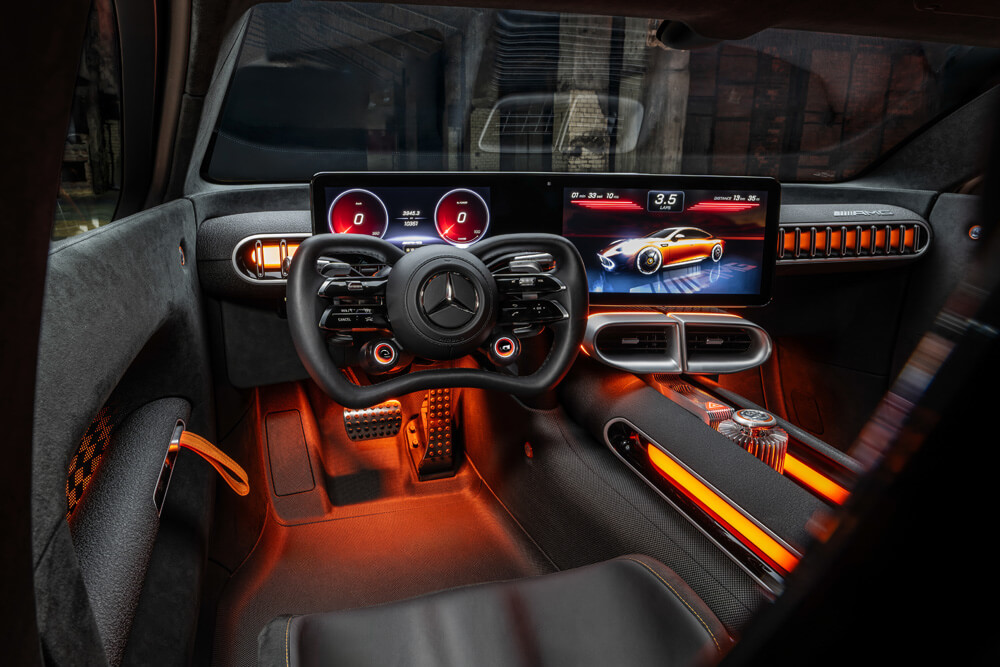
The vehicle employs three of these motors configured in two High Performance Electric Drive Units. The rear unit houses two motors, each paired with a planetary gearset and inverter within a single casing. The front unit contains a single motor functioning as a booster, engaging only when additional power or traction is required. This intelligent system employs a Disconnect Unit that decouples the front motor during steady driving, reducing drag losses and improving efficiency.

The electromagnetic flux in these motors runs parallel to the rotation axis, creating a unique stator-rotor configuration that resembles slim discs. This arrangement enables optimal power transmission whilst maintaining a remarkably compact footprint – the front unit measures just nine centimetres in width, whilst each rear motor is approximately eight centimetres wide. The result is a drivetrain that delivers unprecedented performance without the bulk traditionally associated with high-output electric systems.
Advanced Battery Technology
The High Performance Electric Battery represents a complete departure from conventional lithium-ion technology. Developed in collaboration with the company’s Formula 1 team at High Performance Powertrains in Brixworth, this system delivers exceptional repeatability and rapid energy absorption. The battery utilises over 3,000 cylindrical cells housed in laser-welded aluminium containers, a departure from the steel casings typically employed in automotive applications.
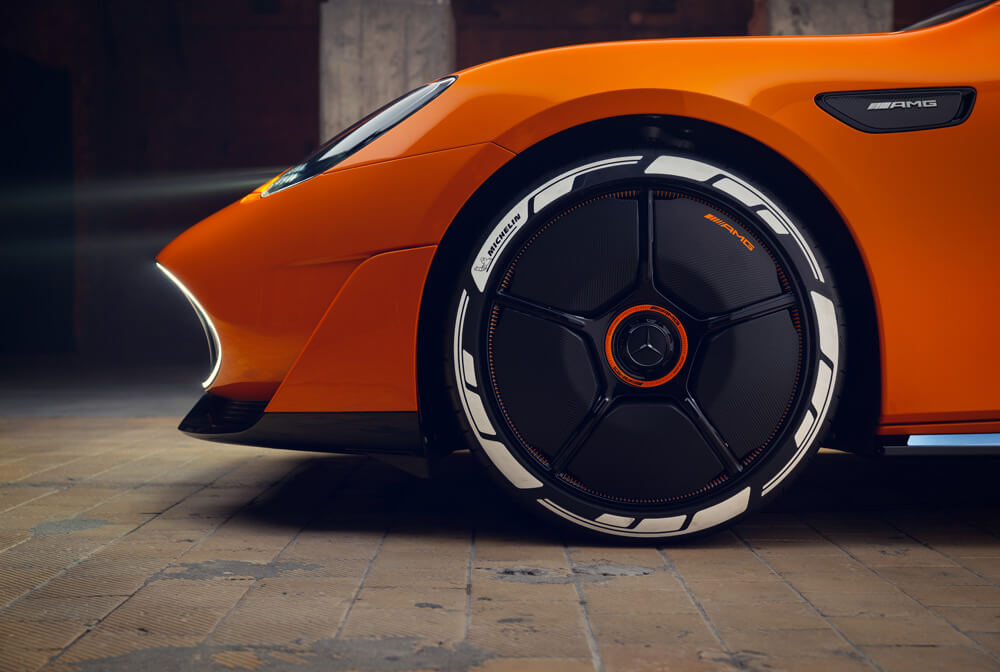
“We have succeeded in translating our design vision for AMG into the future. Sports cars have always been the icons of our brand; they are emotional and truly special to create. They represent unique moments in time. Icons like the 300 SL and the legendary Silver Arrows are the emotional heart of our brand, as are the GT and AMG ONE. Crafting these masterpieces is about creating something extraordinary – from the C111 to the Vision One‑Eleven, and into the future of production.”
Gorden Wagener, Chief Design Officer at Mercedes-Benz
The cells themselves feature a tall, narrow format that facilitates superior thermal management. The reduced diameter minimises the distance from the cell core to the casing, enabling rapid heat dissipation during high-load conditions. Full-tab configuration ensures the entire cell surface is electrically and thermally connected, significantly reducing internal resistance and enabling higher charging and discharging rates.
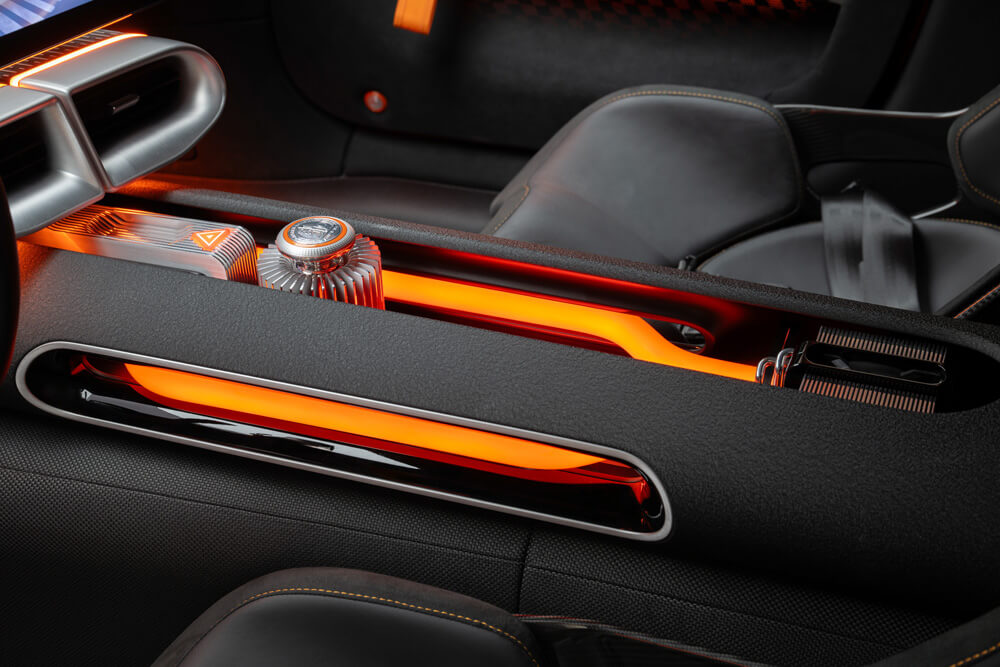
Direct cooling technology represents perhaps the most significant innovation in the battery system. A high-tech coolant based on electrically non-conductive oil flows around each individual cell, maintaining optimal temperatures even during sustained high-performance driving. This system enables the battery to operate at over 800 volts whilst delivering an average charging power exceeding 850 kW at 1,000 amperes across a wide range of the charging curve.
Aerodynamic Excellence
The CONCEPT AMG GT XX’s aerodynamic package demonstrates that electric performance cars need not sacrifice efficiency for visual drama. The vehicle achieves a drag coefficient of just 0.198 despite mounting wide high-performance tyres, a remarkable achievement that contributes significantly to its high-speed capabilities and extended range.
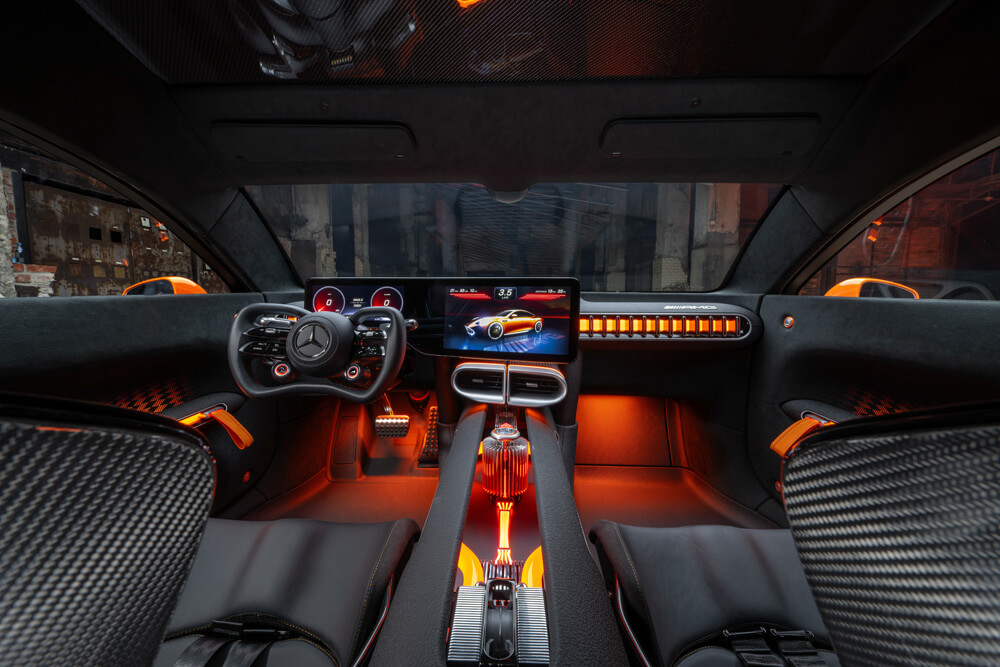
The body’s aerodynamic refinement extends beyond simple drag reduction. The underbody features a specially developed contour that generates the Venturi effect, reducing rear lift without compromising the drag coefficient. This intelligent approach enables a lower rear profile whilst maintaining stability at the vehicle’s 360 km/h-plus top speed. The active AIRPANEL system, evolved from the AMG GT series, manages airflow through multiple stages according to cooling requirements, offering an optimal balance between thermal management and aerodynamic efficiency.
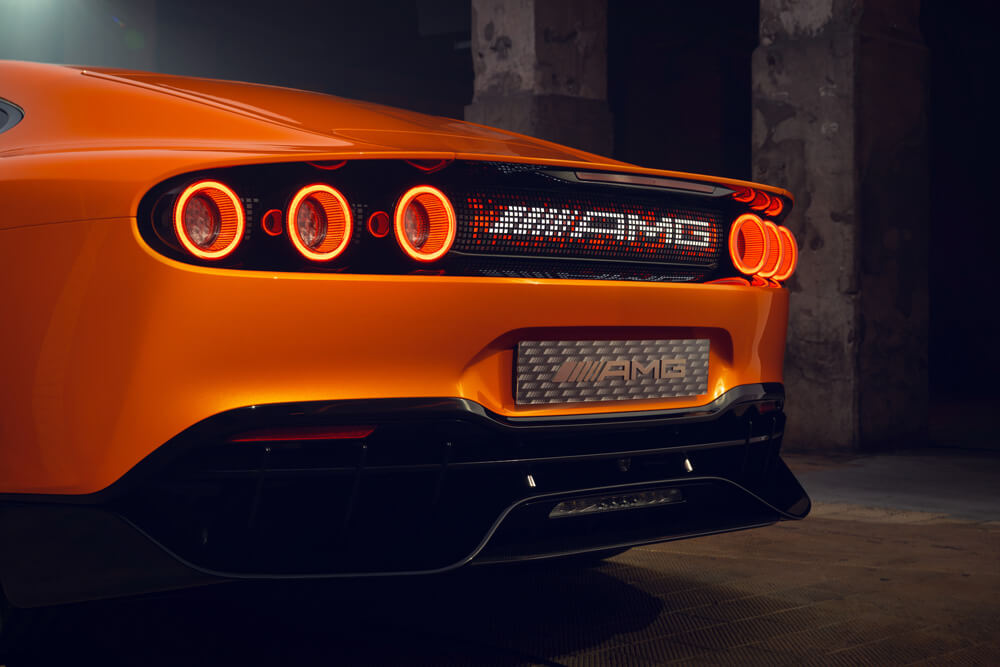
At 300 km/h, approximately 83 percent of the drive energy is consumed overcoming drag, underlining the critical importance of aerodynamic efficiency in high-performance applications. The CONCEPT AMG GT XX’s sharp angles, low-slung profile, and absence of a traditional rear windscreen all contribute to its exceptional aerodynamic performance. The wide rear diffuser, reminiscent of the AMG ONE, provides essential downforce whilst maintaining the vehicle’s striking visual presence.
Intelligent Manufacturing Innovation
The production of the axial flux motors at the Mercedes-Benz facility in Berlin-Marienfelde showcases the company’s commitment to manufacturing innovation. The process involves approximately 100 production steps, with 65 processes entirely new to the company and 35 representing world firsts. These innovations include novel laser technology combined with advanced joining processes and artificial intelligence applications, resulting in over 30 patent applications.
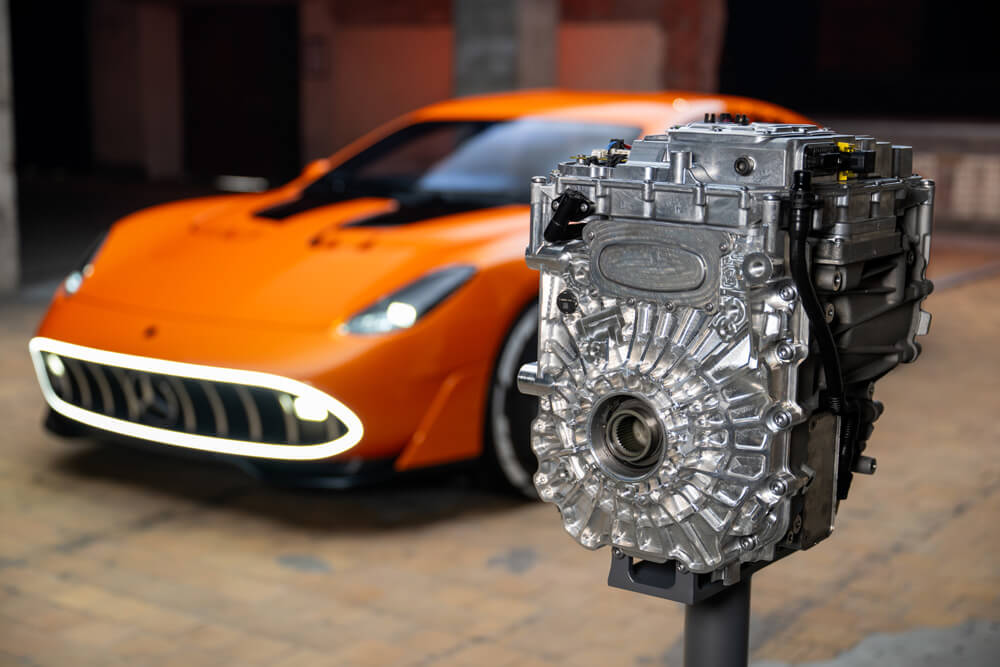
The manufacturing complexity reflects the sophisticated nature of the technology. Each motor requires precise assembly of multiple components, with tolerances measured in fractions of millimetres. The integration of silicon carbide materials in the inverters offers significant advantages in high-voltage, high-temperature applications, whilst the oil-cooled motors and transmissions ensure optimal thermal management during production and operation.


